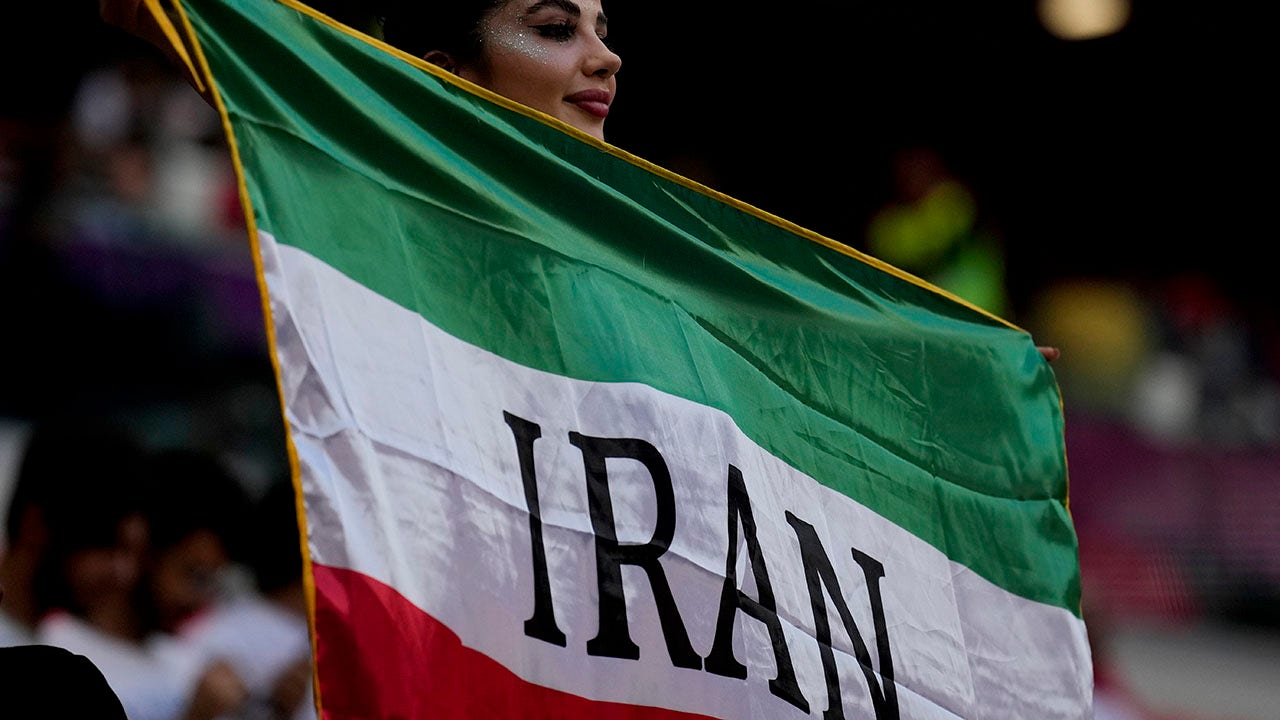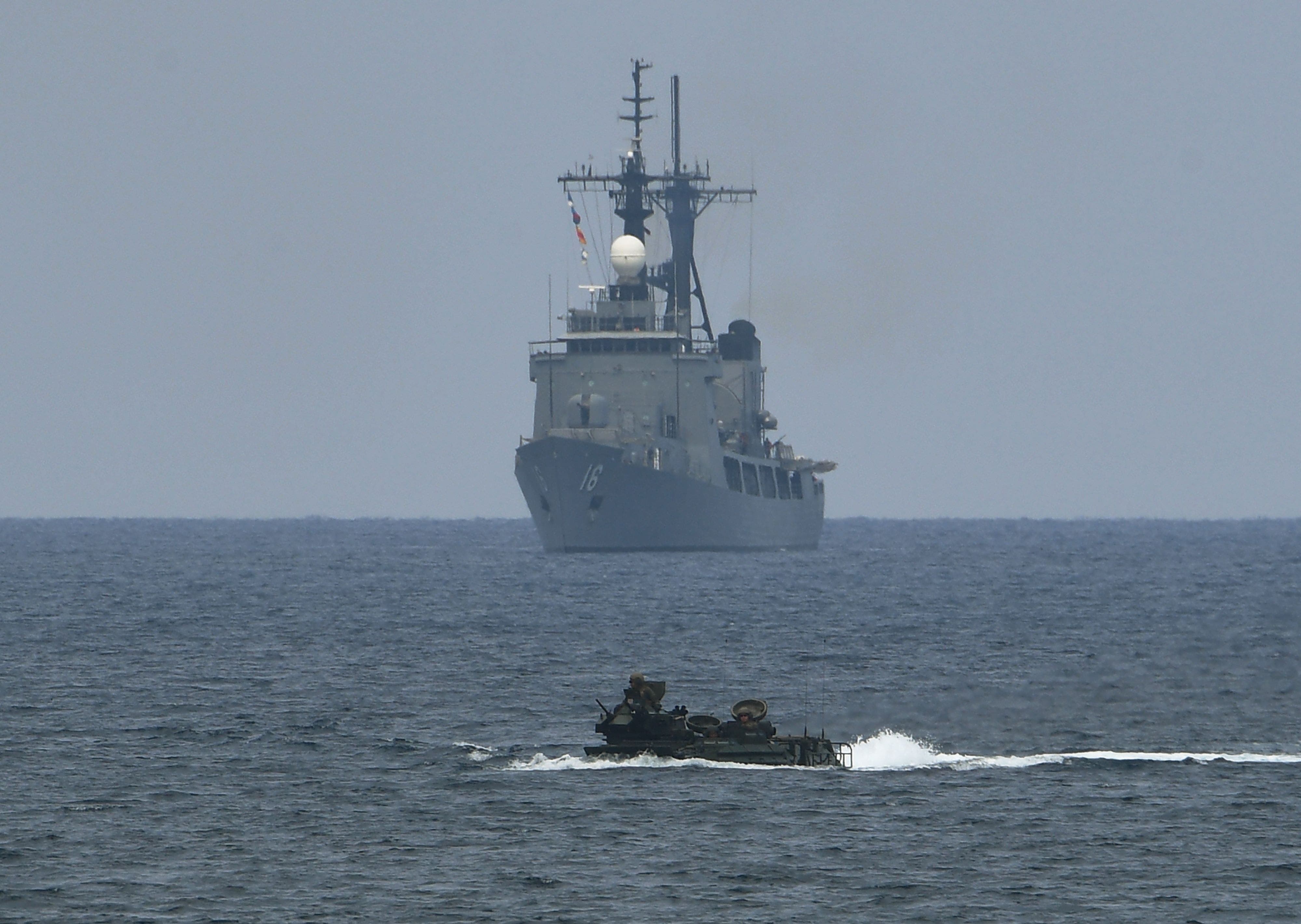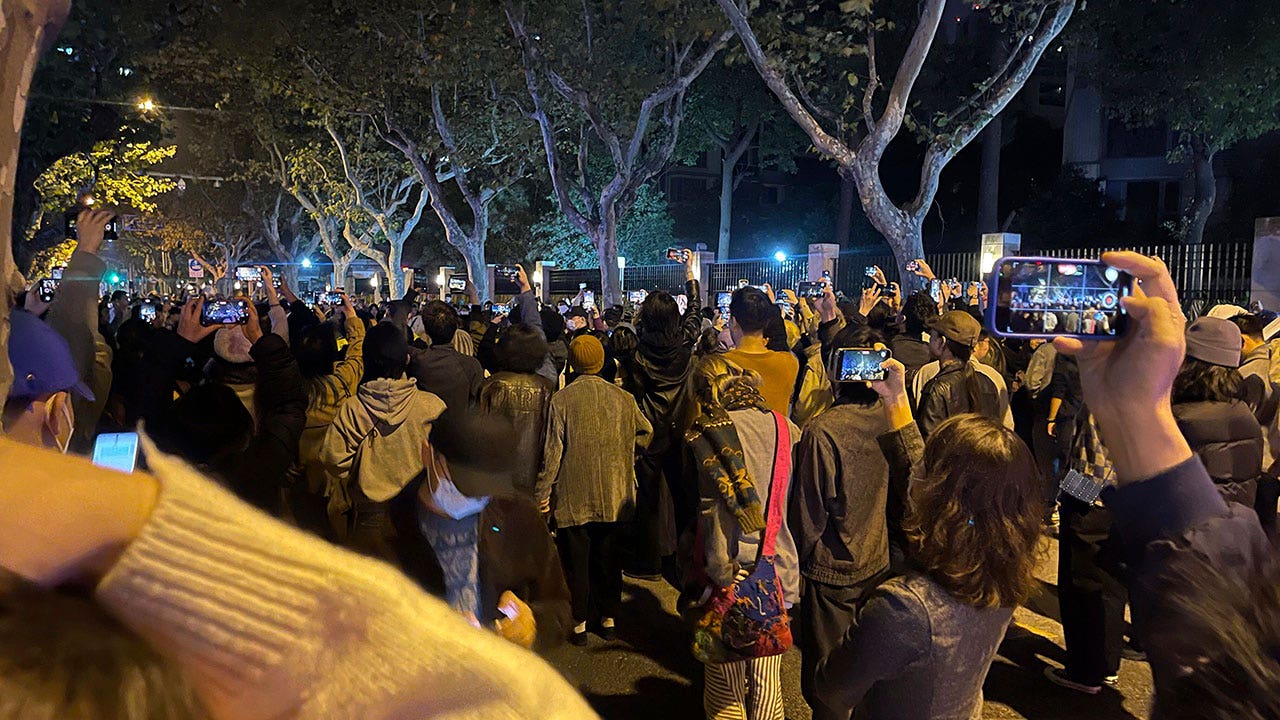Just what a vulnerable world economy” target=”_blank”>economy< consumers to indebted world-regions developers and families in Africa that face soaring food prices.
world-regions’s attack on conflicts and retaliatory sanctions from the West may not portend another global recession. The two countries together account for less than 2% of the world’s gross domestic product. And many regional economies remain in solid shape, having rebounded swiftly from the pandemic recession.
Yet the conflict threatens to inflict severe economic damage on some countries and industries — damage that could mean hardships for millions of people. Russia is the world’s third-biggest producer of energy” target=”_blank”>petroleum<
“I wouldn’t be misled by just calculating GDP ratios … especially at a time when commodity prices are already high, inflation is already high,” said Elina Ribakova, deputy chief economist at the Institute of International Finance, a trade group for banks. “It’s a tricky moment now, given where the global economy is.’’
Russia’s attack could slow Europe’s economic recovery by sending already elevated energy prices ever higher. Europe, an energy importer, receives close to 40% of its natural gas from Russia. A cutoff of that energy source could undercut the continent’s economy. High natural gas prices have already led to higher home utility bills for both natural-gas heat and electricity generated from gas, crimping consumer spending.
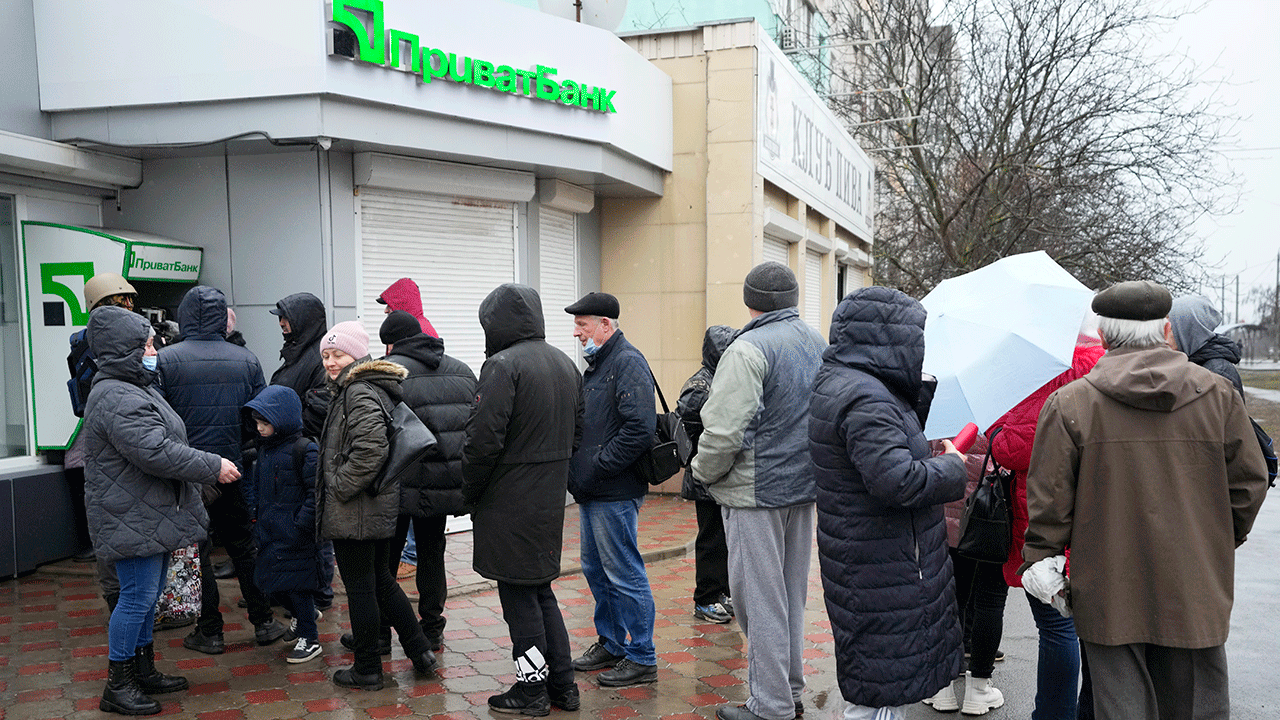
People line up to withdraw their money from an ATM in Mariupol, Ukraine, Thursday, Feb. 24, 2022.
(AP Photo/Sergei Grits)
“Gas prices in Europe are already crushing households and consumers, especially low-income households,” said Adam Tooze, director of Columbia University’s European Institute, whose 2018 history of the last decade’s financial crisis, “Crashed,’’ explored tensions over Ukraine.
“Escalating tensions put two cornerstones of this year’s expected growth recovery — a rebound in consumer spending and a pickup in industrial activity — at further risk,” Oliver Rakau and Mateusz Urban at Oxford Economics said in a research note.
Natural gas prices, which have tended to rise on crisis news, remain about four times what they were at the start of 2021. Russia sold less gas than normal on the short-term spot market, raising concerns that the Kremlin was using gas to press for approval of its Nord Stream 2 pipeline. The pipeline has now been frozen by sanctions imposed by Germany’s government.
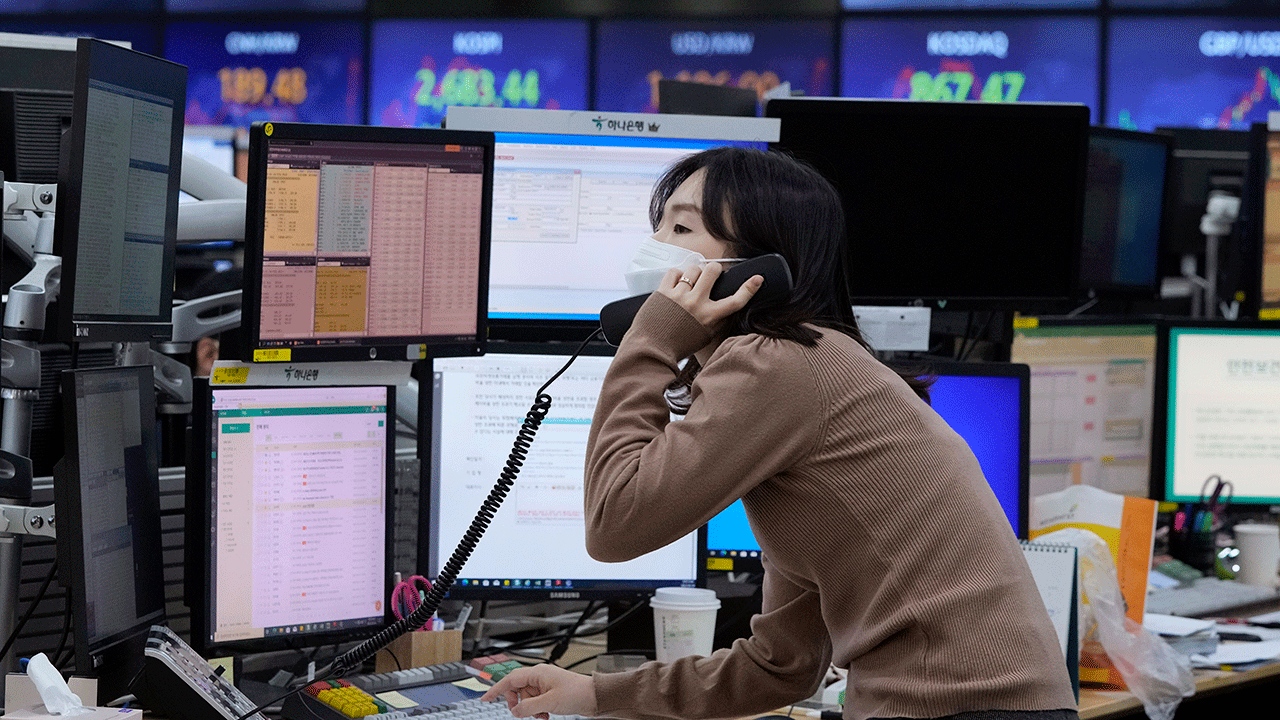
A currency trader talks on the phone at the foreign exchange dealing room of the KEB Hana Bank headquarters in Seoul, South Korea, Thursday, Feb. 24, 2022.
(AP Photo/Ahn Young-joon)
A mild winter and extra supplies of liquefied natural gas from the United States have helped ease some of Europe’s jitters about a potential loss of Russian gas. Analysts say Russia has no interest in a complete gas cutoff, which would mean a sharp loss of revenue.
The threat to farms in eastern Ukraine and exports through Black Sea ports could reduce wheat supplies at a time when global food prices are at their highest level since 2011 and some countries are suffering from food shortages.
MARINE CORPS VET WARNS IF RUSSIAN INVASION ESCALATES, IT WILL BE ‘BRUTAL’
Ukraine is the world’s fifth-largest wheat exporter, agricultural analyst Alex Smith wrote last month in the journal Foreign Policy, and many of the countries that rely on its wheat “already face food insecurity from ongoing political instability or outright violence.” Yemen, for instance, imports 22% of its wheat consumption from Ukraine, Libya about 43%, Lebanon roughly half.
Rising energy and food prices will intensify the inflationary pressures that policymakers and central banks are struggling to ease. In the estimation of Capital Economics, a worst-case scenario of an escalating conflict and sanctions could send oil prices up to as much as $140 a barrel — international Brent crude had surged above $100 on Thursday after Russia attacked Ukraine — and force natural gas prices up, too.
That combination would add a sizable 2 percentage points to annual inflation in the world’s wealthy countries, Capital Economics estimates. In the United States, the world’s largest economy, consumer inflation jumped 7.5% last month compared with 12 months earlier, the steepest annual increase since 1982.
With inflation running hot, central banks may have less leeway — or inclination — to ride to the rescue with stimulus if the economy sputters in the face of the military conflict in Ukraine.
CLICK HERE TO GET THE FOX NEWS APP
“The current inflationary backdrop suggests that policymakers have less flexibility than in the past to respond to a slowdown in real activity or a fall in asset prices,” said Jonathan Petersen at Capital Economics.
Indeed, stocks have tumbled in anticipation of higher rates and a potential downturn. Market benchmarks in Europe and Asia fell by as much as 4% on Thursday, while Wall Street futures retreated by an unusually wide daily margin of 2.5%.
In the face geopolitical worries, Michael Taylor, managing director at Moody’s Investors Service, warns that investors may flee to Treasurys and other super-safe investments, thereby driving up the relative credit costs for riskier businesses.
“Chinese property developers would be particularly exposed to this risk” as they try to roll over large amounts of foreign debt this year, Taylor said.
Financial markets could grow even more chaotic if the United States proceeds with what some call the “nuclear option”: Cutting Russia out of the SWIFT payment network, a messaging service that links thousands of banks and allows them to transfer payments around the world.
Such a move would isolate Russia and bar the transfer of profits from energy production, which account for more than 40% of the country’s revenue. But shutting Russia out of international finance could backfire, too, hurting U.S. and European companies that do business with Russian companies.
“There is a risk for global finance as much as there is for Russia,” said Ribakova of the Institute of International Finance.






